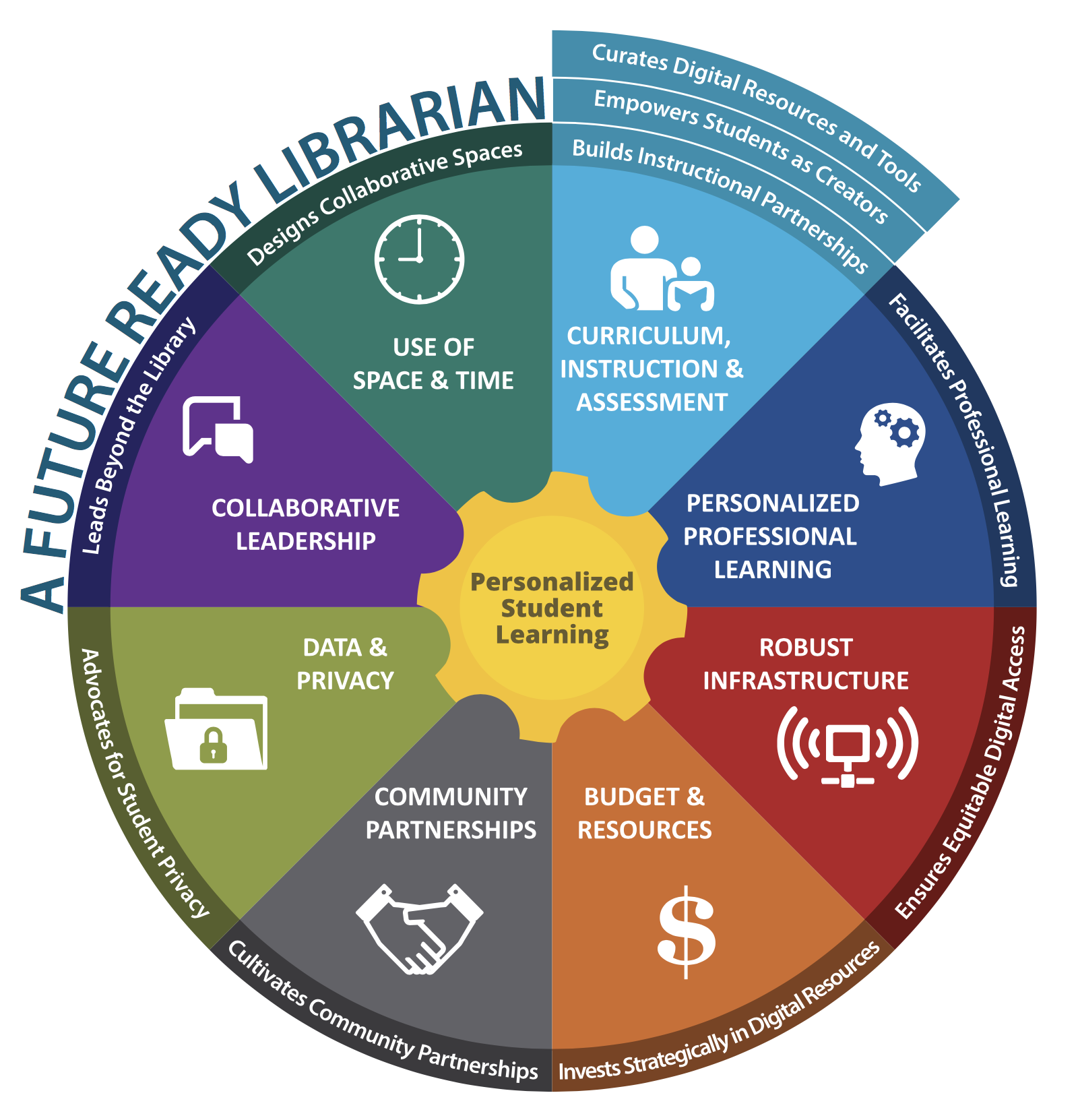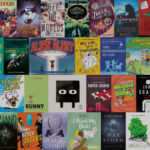Founded on the principles of equitable access in a digital age, the launch of Future Ready Schools in 2014 called on district superintendents to reflect on current practices surrounding personalized student learning and develop a plan to advance opportunities for student growth. By signing the Future Ready Pledge, superintendents commit to:
- Fostering and Leading a Culture of Digital Learning Within Our Schools
- Helping Schools and Families Transition to High-speed Connectivity
- Empowering Educators through Professional Learning Opportunities
- Accelerating Progress Toward Universal Access for All Students to Quality Devices
- Providing Access to Quality Digital Content
- Offering Digital Tools to Help Students and Families #ReachHigher
- Mentoring Other Districts and Helping Them Transition to Digital Learning (https://tech.ed.gov/pledge/)
To achieve these goals, districts are given access to the Interactive Planning Dashboard, which allows schools to collaborate and focus on the seven areas of the Future Ready framework. By utilizing the framework and the planning dashboard, schools will develop a digital implementation plan comprised of “practitioner recommended strategies, including stakeholder input, local context, and district team leadership responsibilities.” (http://futureready.org/about-the-effort/framework/)
To put this plan into practice, districts needed to identify instructional leaders outside of formal leadership roles. Shortly after the launch of Future Ready Schools (FRS) was the launch of the Future Ready Librarians Framework. Modeled from the FRS Framework, the Future Ready Librarians Framework was created with the hopes of “raising awareness among district and school leaders about the valuable role librarians can play in supporting the Future Ready goals of their school and district” (for more information, see http://futureready.org/program-overview/librarians/). Many librarians had already established themselves as in-house educational technology experts and were at the forefront of innovative instructional practices. For those librarians, their leadership potential and connection to the Future Ready initiative were recognized even before the publication of the Future Ready Librarians Framework.
Fast forward to the end of 2017 and you’ll find Future Ready Librarians in some form at nearly every state and national conference, usually presenting several programs and sessions. With a Facebook community of 10,000 members and growing, an active hashtag on Twitter (#FutureReadyLibs), webinars, and blog posts galore, there is no shortage of support. It’s hard to find a librarian that hasn’t heard the phrase “future ready librarian,” But over the last 18 months, the phrase “future ready librarian” has shifted further away from the framework itself and more toward a general statement of innovation within the profession. While excited that this phrase is commonplace in both the library world and the greater realm of education, I see some problematic implications in using the two interchangeably. Without a clear understanding of the two, the lack of distinction could do more to hinder our profession than help.
When I initially sat down to write this article, I had intended on sharing how to use the Future Ready Librarians Framework as a needs assessment and a reflection tool. I had just seen an incredible post about using the framework to identify yearly goals and I was seeing several posts on districts considering using the framework as an evaluation tool. I decided to create a modified version of Suzanne Snead’s Future Ready Librarian Goals Google Sheet and I started identifying things that I had done in my library that aligned with the Future Ready Librarians Framework. Even before I began completing the document, I knew I’d have more activities in certain areas than others but I was excited to see what it looked like visually. Where was I spending all of my time? Where did I need to put more attention? How would mine compare with my colleagues? My mind was racing with all of the information this document could give me and how I could use it with my administrators.
Not long into completing the document I began struggling. There were a growing number of things that I did (and was very proud of) that I couldn’t categorize. Where did I classify the programs and activities related to readers advisory? Where did I classify the professional development I did that wasn’t tech-focused? There were these exciting new standards and program guidelines to integrate, but where did they fit in? The framework identified budgeting for digital resources but had no mention of the print resources I carefully selected for my students and staff. Where do I classify these critical areas? The framework highlighted students’ creating digital projects, but I was so proud of the low-tech projects they had created in our makerspace and I didn’t know where those were supposed to go. I am an edtech enthusiast and I love trying out new tools with my students and staff, but there are a lot of great things I did that involved no technology whatsoever. Because they weren’t “digital,” I simply couldn’t align them with the framework.

It wasn’t until I struggled to find where to categorize certain activities and programs that I realized I was using the framework out of context. Even though I had read the document what seemed like a hundred times, I was trying to use the framework as a tool for my entire library program. The Future Ready Schools initiative was created to address the specific purpose of digital learning in schools, despite there being a lot more to a quality education than just the way technology is implemented. Similarly, the Future Ready Librarians Framework was created to address the ways school librarians can support the Future Ready goals of their school, despite a school librarian’s support of students and staff in many more ways. While I feel that the framework can still be used to create goals, I feel it would be much more meaningful if it were directly aligned to the school’s goals identified by the collaborative planning team. Imagine if we looked at a student this way. By evaluating a student solely on standardized performance data, we’re missing so much of that child. In the same way, by looking at my role as a librarian through the lens of one area, I’m not only missing my strengths but I’m missing areas to improve. This is a cautionary tale for librarians using this framework as an evaluative tool for this very reason. By evaluating my role as a school librarian solely on digital integration, my role is being grossly underrepresented. I say this as a librarian who would be evaluated very highly if I were evaluated using this tool because of how much I have integrated technology. However, one of my biggest weaknesses as a librarian is readers advisory.
Being a librarian requires one to be extremely dynamic. Throw in all the “other duties as assigned” (i.e. laminator technician, emergency substitute, on-call therapist, and recess monitor), librarians are so much more than great technology specialists. Over the last two years, those in the profession who embrace all areas of the pie—sometimes including the Future Ready Librarians Framework—have been referred to as “future ready librarians.” For better or for worse, the distinction between Future Ready Librarian (referring to the actual framework) and a future ready librarian (referring to dynamic, innovative librarians) is blurring.
I recently asked librarians on Facebook for their 30-second take on what the Future Ready Librarians Framework is. Most of their answers aligned with the future ready librarian rather than the Future Ready Librarians Framework, but does it matter? While I can’t say for certain, I do have a few concerns with the blurred lingo. I see an issue if a librarian is seeking to be more future ready (dynamic), but utilizes the Future Ready Librarians Framework to get there. I see an issue if an administrator wants to have a future ready librarian (dynamic) and evaluates them on the Future Ready Librarians Framework. Both ignore the fact that a librarian’s role in supporting digital learning is just a portion of their overall job. This clarification needs to be known far and wide.
Being that the Future Ready Librarians Framework was created as an advocacy tool to “raise awareness among district and school leaders about the valuable role librarians can play…,” I urge those within the field of librarianship to highlight the Future Ready Librarians Framework as a part of their job. By celebrating the framework as a piece of a much larger picture, we can continue to advance the profession and grow in all areas that support the needs of our students.
Works Cited
“Future Ready Frameworks.” Future Ready Schools, http://futureready.org/about-the-effort/framework/.
“Future Ready Librarians Overview.” Future Ready Schools, http://futureready.org/program-overview/librarians/.
Snead, Suzanne. “Future Ready Librarians Goal Planning Sheet,” 2017, https://docs.google.com/spreadsheets/d/1Lnc_sTONxCLW7PO3mMF_tpNe8ThMZKuAGdHR3jSow_4/edit#gid=0
Article originally appeared in the December issue of Library Media Connection.






